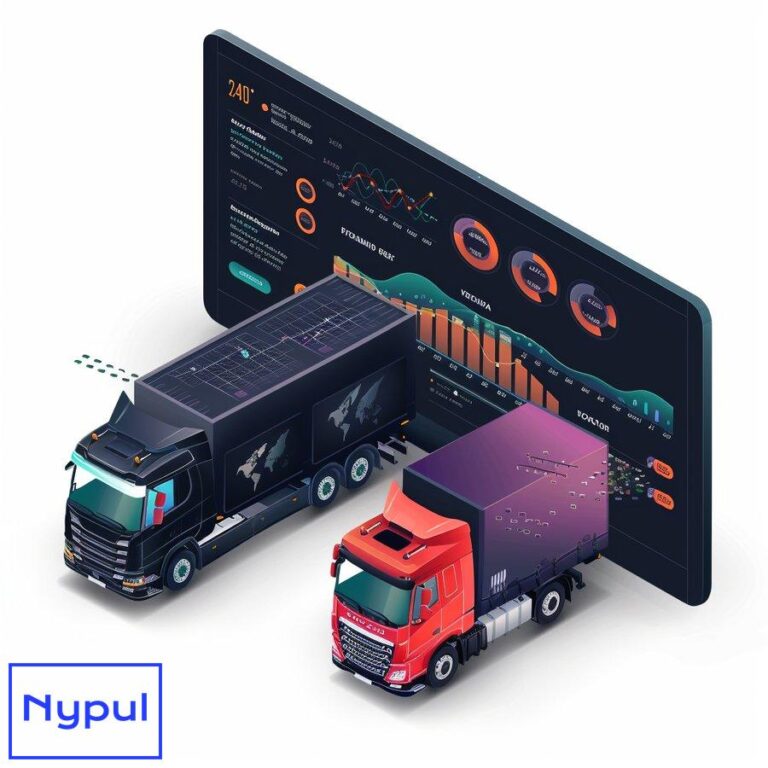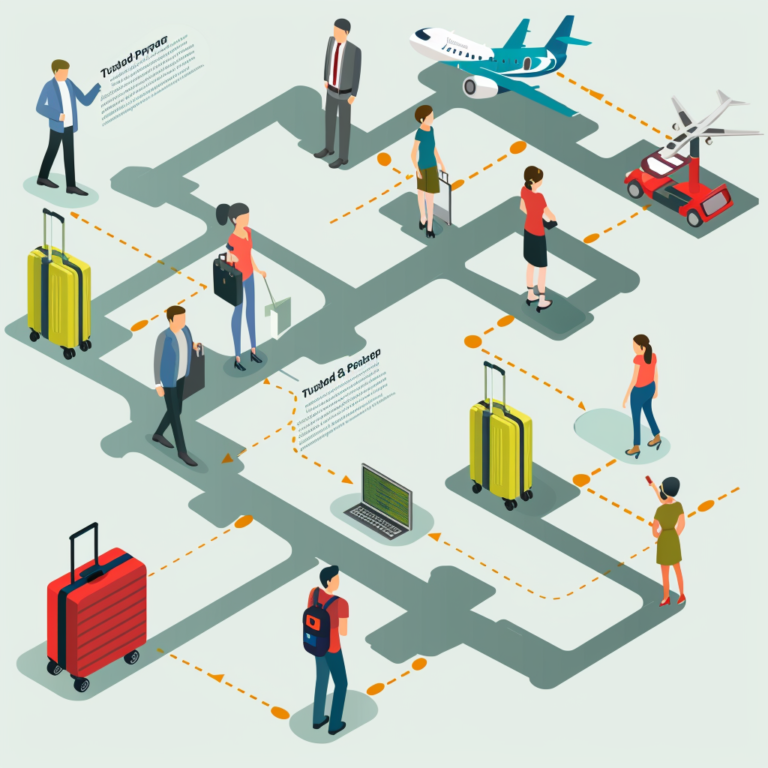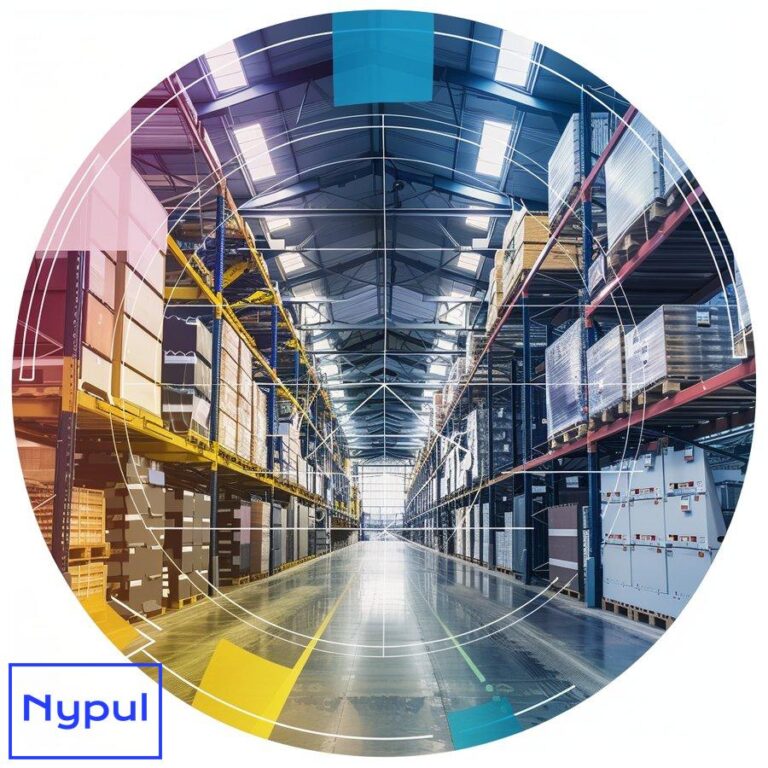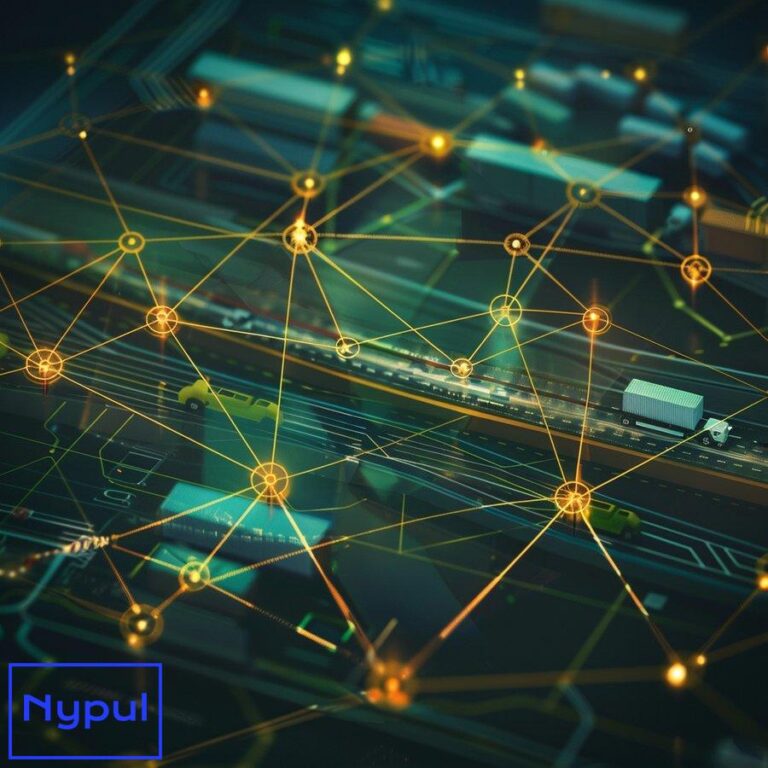What Does Local Drayage Mean
What Does Local Drayage Entail?
Local drayage refers to the short-distance transportation of goods, typically within a single metropolitan area or region. This crucial logistics service involves moving cargo between ports, rail yards, warehouses, and distribution centers, forming a vital link in the supply chain.
The term “drayage” originates from the historical use of “dray” horses to pull heavy loads over short distances. While the mode of transport has evolved, the essence of drayage remains unchanged – efficiently moving goods across relatively small geographic areas.
Key components of local drayage include:
Short-haul trucking: Local drayage primarily utilizes trucks for transporting containers, pallets, or other cargo units. These trucks are designed for efficient loading and unloading, often featuring specialized equipment like container chassis.
Intermodal connections: Drayage serves as a bridge between different modes of transportation. For example, it connects sea freight arriving at ports to rail terminals or distribution centers inland.
Time-sensitive operations: Local drayage often deals with time-critical shipments, requiring precise scheduling and coordination to meet delivery windows and avoid demurrage charges.
Specialized handling: Depending on the cargo type, local drayage may involve specialized equipment or procedures. This could include refrigerated transport for perishables or flatbed trucks for oversized loads.
Documentation and customs clearance: For international shipments, local drayage providers often assist with customs documentation and clearance processes at ports of entry.
To illustrate the scope of local drayage, consider the following table outlining common drayage distances and timeframes:
| Drayage Type | Typical Distance | Average Transit Time |
|---|---|---|
| Port Drayage | 5-50 miles | 1-4 hours |
| Rail Drayage | 10-100 miles | 2-8 hours |
| Inter-Terminal | 1-10 miles | 30 minutes – 2 hours |
| Distribution Center | 20-150 miles | 1-6 hours |
Local drayage plays a critical role in maintaining the fluidity of supply chains. By efficiently moving goods across short distances, it enables seamless transitions between long-haul transportation modes and final distribution points.
For businesses relying on just-in-time inventory management or e-commerce fulfillment, effective local drayage becomes even more crucial. It ensures that products reach their destinations promptly, minimizing storage costs and improving overall supply chain responsiveness.
The complexity of local drayage operations often necessitates specialized knowledge and expertise. Drayage providers must be familiar with:
Local regulations: Each metropolitan area may have specific rules governing truck routes, weight limits, and operating hours. Compliance with these regulations is essential for smooth drayage operations.
Port and terminal procedures: Understanding the intricacies of port operations, including appointment systems, documentation requirements, and security protocols, is crucial for efficient drayage services.
Traffic patterns: Knowledge of local traffic conditions and alternative routes helps drayage providers optimize their operations and meet delivery schedules.
Equipment management: Efficient allocation and maintenance of trucks, chassis, and other equipment are vital for reliable drayage services.
While local drayage may seem straightforward at first glance, its importance in the broader logistics landscape cannot be overstated. As global trade continues to grow and supply chains become increasingly complex, the role of local drayage in ensuring smooth, efficient cargo movement will only become more critical.
How Does Local Drayage Fit into the Supply Chain?
Local drayage serves as a crucial connector within the intricate web of global supply chains. Its role in bridging the gap between long-haul transportation and final distribution points makes it an indispensable component of modern logistics networks.
To understand how local drayage fits into the supply chain, let’s examine its position and functions:

First-mile and last-mile logistics: Local drayage often represents the first or last leg of a product’s journey. In first-mile logistics, it moves goods from manufacturers or suppliers to ports or rail terminals for long-distance transport. In last-mile logistics, it delivers products from distribution centers to retailers or end consumers.
Intermodal connectivity: One of the primary functions of local drayage is to facilitate the transition between different modes of transportation. This intermodal connectivity ensures that goods can move seamlessly from ships to trucks, trucks to trains, or any combination thereof.
Buffer against supply chain disruptions: Local drayage provides flexibility in routing and scheduling, helping to mitigate the impact of disruptions in other parts of the supply chain. For instance, if a port experiences congestion, drayage providers can adjust their operations to minimize delays.
Inventory management support: Efficient local drayage enables just-in-time inventory strategies by ensuring timely delivery of goods to warehouses and distribution centers. This helps businesses reduce storage costs and improve cash flow.
Customs and regulatory compliance: For international shipments, local drayage often includes managing customs clearance processes. This ensures that goods comply with import/export regulations and can move smoothly through ports of entry.
To illustrate the integration of local drayage in a typical supply chain, consider the following table:
| Supply Chain Stage | Role of Local Drayage |
|---|---|
| Manufacturing | Transport finished goods from factory to port or rail terminal |
| International Shipping | Move containers from port to customs inspection facilities |
| Domestic Distribution | Transfer goods from rail terminals to distribution centers |
| Retail Fulfillment | Deliver products from distribution centers to retail stores |
| E-commerce | Transport items from fulfillment centers to last-mile carriers |
The importance of local drayage in the supply chain becomes even more apparent when considering its impact on key performance indicators:
Lead time reduction: Efficient drayage operations can significantly reduce the time it takes for goods to move between transportation hubs, ultimately shortening overall lead times.
Cost optimization: By minimizing delays and optimizing routes, local drayage helps reduce transportation costs and avoid expensive demurrage or detention charges.
Inventory accuracy: Timely and reliable drayage services enable more accurate inventory forecasting and management, reducing the need for safety stock.
Customer satisfaction: Prompt and dependable local drayage contributes to on-time deliveries, enhancing customer satisfaction and loyalty.
The integration of local drayage with other supply chain functions requires careful coordination and communication. Key interfaces include:
Port operations: Drayage providers must work closely with port authorities and terminal operators to coordinate container pickups and drop-offs, navigate appointment systems, and address any issues that arise.
Customs and border protection: For international shipments, drayage companies often liaise with customs officials to ensure smooth clearance of goods and compliance with import/export regulations.
Warehousing and distribution: Efficient communication between drayage providers and warehouse operators is essential for scheduling deliveries, managing dock appointments, and optimizing loading/unloading processes.
Transportation management systems (TMS): Integration with TMS platforms allows for real-time tracking of shipments, automated scheduling, and improved visibility across the supply chain.
As supply chains continue to evolve, the role of local drayage is likely to become even more critical. Trends shaping the future of drayage in supply chains include:
Increased digitalization: The adoption of digital platforms and IoT technologies is improving visibility and coordination in drayage operations, leading to greater efficiency and responsiveness.
Sustainability initiatives: Growing emphasis on reducing carbon emissions is driving the development of more environmentally friendly drayage solutions, including electric and alternative fuel vehicles.
E-commerce growth: The rapid expansion of e-commerce is placing greater demands on local drayage services, particularly in urban areas, necessitating innovative last-mile delivery solutions.
Resilience and flexibility: Recent supply chain disruptions have highlighted the need for more agile and adaptable drayage services that can quickly respond to changing market conditions.
Local drayage’s position at the intersection of various supply chain functions makes it a critical factor in overall logistics performance. As businesses strive for greater efficiency and responsiveness in their supply chains, the importance of optimizing local drayage operations will only continue to grow.
What Are the Different Types of Drayage Services?
Drayage services come in various forms, each tailored to meet specific logistical needs within the supply chain. Understanding these different types of drayage is crucial for businesses seeking to optimize their transportation strategies. Let’s explore the main categories of drayage services:

Port drayage: This is perhaps the most common type of drayage service. It involves the transportation of containers or other cargo from seaports to nearby destinations such as warehouses, distribution centers, or rail terminals. Port drayage plays a critical role in international trade, facilitating the movement of imported goods from ships to inland locations.
Key aspects of port drayage include:
– Coordination with port authorities and terminal operators
– Management of container pickup and return processes
– Compliance with port security and documentation requirements
Inter-carrier drayage: This type of drayage involves moving cargo between different transportation carriers. For example, it might include transferring a container from a ship to a train, or from one trucking company to another. Inter-carrier drayage ensures smooth transitions between different modes of transport or logistics providers.
Intra-carrier drayage: Unlike inter-carrier drayage, this service involves moving goods between facilities owned or operated by the same carrier. It might include transferring cargo between different terminals or warehouses within a single company’s network.
Expedited drayage: When time is of the essence, expedited drayage services come into play. This type of drayage prioritizes speed, often involving dedicated trucks and drivers to ensure rapid delivery of time-sensitive cargo. Expedited drayage is commonly used for perishable goods, urgent manufacturing components, or high-value items requiring swift transportation.
Shuttle drayage: This service involves the repeated movement of cargo between two nearby locations. Shuttle drayage is often used to manage overflow at busy ports or distribution centers, temporarily moving containers to off-site storage facilities and back as needed.
Door-to-door drayage: This comprehensive service covers the entire journey of a shipment from its origin to its final destination. Door-to-door drayage might include pickup from a manufacturer, transport to a port, customs clearance, and final delivery to a customer’s location.
Pier drayage: Similar to port drayage, pier drayage specifically refers to the movement of goods to and from a pier or dock. This can include both maritime piers and inland waterway facilities.
To better understand how these different types of drayage services compare, consider the following table:
| Drayage Type | Primary Function | Typical Distance | Key Considerations |
|---|---|---|---|
| Port Drayage | Move cargo from seaports to inland locations | 5-50 miles | Port congestion, customs clearance |
| Inter-carrier Drayage | Transfer cargo between different carriers | Varies | Coordination between carriers, equipment compatibility |
| Intra-carrier Drayage | Move goods within a single carrier’s network | 1-100 miles | Internal scheduling, asset utilization |
| Expedited Drayage | Rapid transport of time-sensitive cargo | Varies | Priority handling, dedicated resources |
| Shuttle Drayage | Repeated movement between nearby locations | 1-20 miles | Frequency of trips, storage capacity |
| Door-to-door Drayage | Complete origin-to-destination service | Varies | End-to-end coordination, multiple handoffs |
| Pier Drayage | Transport to/from piers and docks | 1-50 miles | Waterway access, loading/unloading equipment |
The choice of drayage service depends on various factors, including:
Cargo type: Different goods may require specialized handling or equipment. For example, refrigerated containers for perishables or flatbed trucks for oversized loads.
Urgency: Time-sensitive shipments may necessitate expedited drayage services to meet tight deadlines.
Volume: The quantity of goods being transported can influence the type of drayage service required, with high-volume shippers potentially benefiting from dedicated shuttle services.
Regulatory requirements: Certain types of cargo, such as hazardous materials, may require specific drayage services that comply with relevant regulations.
Geographic considerations: The layout of ports, rail yards, and distribution centers in a given area can impact the most effective type of drayage service.
As the logistics industry evolves, new variations of drayage services continue to emerge. Some notable trends include:
Green drayage: With increasing focus on sustainability, some providers are offering eco-friendly drayage services using electric or alternative fuel vehicles.
Technology-enabled drayage: The integration of advanced tracking systems, AI-powered route optimization, and digital platforms is creating more efficient and transparent drayage services.
On-demand drayage: Similar to ride-sharing services, some companies are developing platforms that allow shippers to request drayage services on short notice, improving flexibility and responsiveness.
Cross-dock drayage: This service combines drayage with cross-docking operations, allowing for rapid transfer of goods between vehicles with minimal storage time.
Understanding the nuances of different drayage services enables businesses to make informed decisions about their transportation strategies. By selecting the most appropriate type of drayage for each shipment, companies can optimize their supply chain operations, reduce costs, and improve overall logistics performance.
What Challenges Are Associated with Local Drayage?
Local drayage, while crucial to supply chain operations, faces numerous challenges that can impact its efficiency and reliability. Understanding these challenges is essential for businesses and logistics providers seeking to optimize their drayage operations. Let’s explore the key issues associated with local drayage:

Port congestion: One of the most significant challenges facing local drayage is port congestion. As global trade volumes increase, many ports struggle to handle the influx of cargo efficiently. This leads to:
– Long wait times for trucks at terminal gates
– Delays in container availability
– Increased risk of missing delivery windows
– Higher operational costs due to idle time
Infrastructure limitations: Many urban areas where drayage operations are concentrated face infrastructure challenges:
– Aging roads and bridges unable to handle increased truck traffic
– Limited parking and staging areas for drayage vehicles
– Insufficient rail connections to ports, leading to over-reliance on trucking
Driver shortages: The trucking industry, including drayage, is grappling with a persistent shortage of qualified drivers. This challenge is exacerbated by:
– An aging workforce with many drivers nearing retirement
– Difficulties in attracting younger workers to the profession
– Stringent licensing and regulatory requirements
Equipment imbalances: Efficient drayage operations require the right equipment in the right place at the right time. Common issues include:
– Shortages of chassis at ports and rail yards
– Mismatches between container types and available equipment
– Challenges in repositioning empty containers
Regulatory compliance: Drayage providers must navigate a complex web of regulations, including:
– Hours of Service (HOS) rules limiting driver work hours
– Environmental regulations governing vehicle emissions
– Port and terminal-specific rules and procedures
– Customs and border protection requirements for international shipments
Unpredictable delays: Local drayage is subject to various unpredictable factors that can cause delays:
– Traffic congestion in urban areas
– Weather-related disruptions
– Labor disputes at ports or warehouses
– Equipment breakdowns
Technology integration: While technology offers solutions to many drayage challenges, its implementation comes with its own set of issues:
– High costs associated with adopting new systems
– Resistance to change among some industry stakeholders
– Interoperability challenges between different platforms and systems
– Cybersecurity concerns related to data sharing and connectivity
Capacity fluctuations: Drayage demand can be highly variable, leading to challenges in capacity management:
– Seasonal peaks in shipping volumes
– Sudden surges in demand due to economic factors or global events
– Difficulties in scaling operations quickly to meet changing needs
To illustrate the impact of these challenges on drayage operations, consider the following table:
| Challenge | Potential Impact | Mitigation Strategies |
|---|---|---|
| Port congestion | Increased wait times, missed deliveries | Off-peak hour operations, port appointment systems |
| Infrastructure limitations | Slower transit times, higher fuel costs | Route optimization, collaboration with local authorities |
| Driver shortages | Reduced capacity, higher labor costs | Driver retention programs, automation technologies |
| Equipment imbalances | Delays, additional repositioning costs | Improved forecasting, equipment pooling arrangements |
| Regulatory compliance | Fines, service disruptions | Comprehensive training, compliance management systems |
| Unpredictable delays | Missed delivery windows, customer dissatisfaction | Real-time tracking, proactive communication |
| Technology integration | Implementation costs, operational disruptions | Phased adoption, staff training, vendor partnerships |
| Capacity fluctuations | Underutilized assets or inability to meet demand | Flexible capacity solutions, demand forecasting |
Addressing these challenges requires a multi-faceted approach involving collaboration between various stakeholders in the supply chain. Some strategies for overcoming drayage challenges include:
Improved planning and forecasting: Utilizing advanced analytics and machine learning algorithms to better predict demand and optimize resource allocation.
Collaborative platforms: Developing shared digital platforms that facilitate communication and coordination between drayage providers, ports, shippers, and other stakeholdersCollaborative platforms: Developing shared digital platforms that facilitate communication and coordination between drayage providers, ports, shippers, and other stakeholders can enhance visibility and streamline operations. These platforms can enable real-time tracking of shipments, improve scheduling efficiency, and reduce delays associated with miscommunication.
Investment in technology: Embracing technology solutions such as transportation management systems (TMS), automated scheduling tools, and IoT devices can help optimize drayage operations. These technologies can provide valuable insights into performance metrics, enabling companies to identify bottlenecks and implement corrective measures.
Driver recruitment and retention initiatives: To address the driver shortage, companies can implement programs aimed at attracting new talent to the industry. This may include offering competitive wages, flexible schedules, training programs, and career advancement opportunities. Additionally, fostering a positive workplace culture can help retain existing drivers.
Infrastructure advocacy: Engaging with local governments and industry associations to advocate for infrastructure improvements is essential. Investments in road maintenance, expansion of port facilities, and development of dedicated truck routes can alleviate some of the logistical challenges faced by drayage providers.
Sustainability practices: Implementing eco-friendly practices within drayage operations can not only help meet regulatory requirements but also improve overall efficiency. This includes investing in fuel-efficient vehicles, exploring alternative fuels, and optimizing routes to reduce emissions.
By proactively addressing these challenges, businesses involved in local drayage can enhance their operational efficiency, improve customer satisfaction, and maintain a competitive edge in the logistics landscape.
How Can Technology Improve Local Drayage Efficiency?

Technology plays a pivotal role in enhancing the efficiency of local drayage operations. As the logistics industry continues to evolve, various technological advancements are being adopted to streamline processes, reduce costs, and improve service quality. Here are some key areas where technology is making a significant impact on local drayage:
Real-time tracking: Implementing GPS tracking systems allows drayage providers to monitor the location and status of shipments in real-time. This visibility enables better route planning, timely updates for customers regarding delivery statuses, and proactive management of potential delays.
Transportation Management Systems (TMS): TMS platforms facilitate the planning, execution, and optimization of transportation operations. These systems provide tools for scheduling pickups and deliveries, managing carrier relationships, and analyzing performance metrics. By automating routine tasks and providing data-driven insights, TMS helps improve overall efficiency.
Route optimization software: Advanced algorithms can analyze traffic patterns, road conditions, and delivery windows to determine the most efficient routes for drayage trucks. By minimizing travel times and reducing fuel consumption, route optimization software contributes to cost savings and improved service levels.
Electronic Data Interchange (EDI): EDI systems enable seamless communication between shippers, carriers, and other stakeholders by automating the exchange of documents such as bills of lading, invoices, and customs declarations. This reduces paperwork errors and accelerates processing times.
Mobile applications: Mobile apps designed for drivers enhance communication between drivers and dispatchers while providing access to critical information on-the-go. Features may include load assignments, navigation assistance, real-time updates on traffic conditions, and electronic proof of delivery.
IoT devices: Internet of Things (IoT) technology allows for the monitoring of cargo conditions during transport. Sensors can track temperature, humidity, and other environmental factors that may impact sensitive goods. This data helps ensure compliance with regulations and maintains product integrity.
To illustrate how technology improves local drayage efficiency further, consider the following table:
| Technology | Benefits | Impact on Efficiency |
|---|---|---|
| Real-time tracking | Enhanced visibility | Improved route planning and reduced delays |
| Transportation Management Systems | Streamlined operations | Automation of scheduling tasks |
| Route optimization software | Cost savings | Reduced fuel consumption and travel times |
| Electronic Data Interchange | Faster processing | Fewer paperwork errors |
| Mobile applications | Improved communication | Increased responsiveness |
| IoT devices | Condition monitoring | Better compliance with regulations |
The integration of technology into local drayage operations not only enhances efficiency but also contributes to improved customer satisfaction. Customers benefit from timely updates on their shipments’ status and greater transparency throughout the transportation process.
As technology continues to advance, several trends are emerging that will further shape the future of local drayage:
Artificial Intelligence (AI): AI-powered analytics can provide deeper insights into operational performance by identifying patterns in data that may not be immediately apparent. This enables proactive decision-making based on predictive modeling rather than reactive responses to issues as they arise.
Blockchain technology: The use of blockchain can enhance transparency in supply chains by providing an immutable record of transactions. This technology can streamline processes such as customs clearance by ensuring all parties have access to accurate information regarding shipment status and documentation.
Automation and robotics: Automation technologies are being explored for various aspects of logistics operations. For example, automated loading/unloading systems at ports could reduce turnaround times for trucks engaged in drayage services.
Sustainability innovations: As environmental concerns grow more pressing, technology will play a crucial role in developing sustainable practices within local drayage operations. This includes electric vehicles (EVs), alternative fuels like hydrogen or biofuels, and smart routing systems that minimize emissions.
In conclusion, technology is transforming local drayage by improving operational efficiency through enhanced visibility, automation of processes, better communication tools, condition monitoring capabilities, and advanced analytics. As these technologies continue to evolve and integrate into logistics operations, businesses that leverage them effectively will be well-positioned to meet the demands of an increasingly complex supply chain landscape while maintaining a competitive edge in the market.






